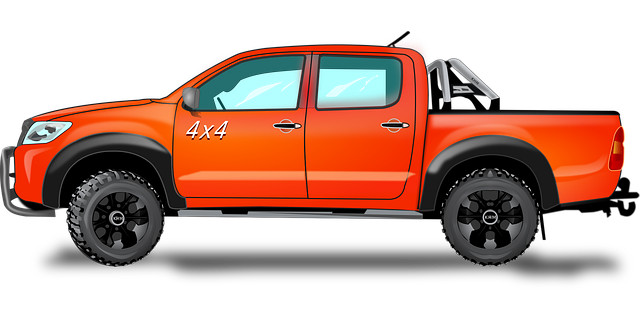Leaf springs, crucial components in vehicle suspension systems, especially in trucks and off-road vehicles like the Brownsville fleet, offer essential functions: absorbing shocks, distributing weight, and maintaining stability. In the Brownsville fleet's truck bed rails, they enhance cargo security by supporting weights and preventing damage. Leaf spring types vary; parabolic shapes excel in passenger comfort, while straight springs are durable for heavy-duty applications. Proper installation, regular maintenance (including inspections, cleaning, and lubrication), and timely troubleshooting are vital for optimal performance and safety in Brownsville fleet operations. Future advancements in materials and digital engineering aim to improve leaf spring technology, catering to diverse industry needs, particularly in transportation like the Brownsville fleet truck bed rails system.
- Understanding Leaf Springs: Basic Concepts and Functions
- The Role of Leaf Springs in Brownsville Fleet Truck Bed Rails
- Types of Leaf Spring Designs and Their Applications
- Installation and Maintenance Tips for Optimal Performance
- Common Issues and Troubleshooting for Leaf Springs in Trucks
- Future Trends and Innovations in Leaf Spring Technology
Understanding Leaf Springs: Basic Concepts and Functions

Leaf springs, a fundamental component in vehicle suspension systems, particularly in trucks and off-road vehicles like the Brownsville fleet, play a crucial role in ensuring a smooth ride and maintaining control while navigating challenging terrains. These mechanical devices are designed to absorb and distribute the weight of the vehicle, as well as manage shock and strain during movement.
At their core, leaf springs consist of one or more layers of flexible metal laminations stacked and bound together. This construction allows them to deform under pressure, providing a protective cushion for the vehicle’s frame and wheels. In the context of truck bed rails, leaf springs contribute significantly to stability by supporting the weight of cargo and ensuring the safety and security of goods during transportation. Understanding the basic concepts and functions of leaf springs is essential for mechanics, truck owners, and fleet managers alike, especially when considering modifications or repairs to enhance performance and safety on demanding roads.
The Role of Leaf Springs in Brownsville Fleet Truck Bed Rails

In the context of the Brownsville Fleet Truck Bed Rails, leaf springs play a critical role in ensuring both the structural integrity and stability of the vehicle’s bed. These springs are designed to absorb and distribute shock, enhancing the overall ride quality during transport. By connecting the truck bed to the chassis, leaf springs prevent excessive movement and vibrations, protecting the cargo from damage and ensuring a smoother journey.
The effectiveness of leaf springs in Brownsville Fleet Truck Bed Rails lies in their ability to provide customizable spring rates, catering to various loading requirements. This adaptability is crucial for transporting different types and sizes of cargo efficiently. Moreover, their durability and ease of maintenance make them a reliable choice for fleet owners, contributing to cost-effective and efficient operations in the transportation industry.
Types of Leaf Spring Designs and Their Applications

Leaf springs, a fundamental component in vehicle suspension systems, come in various designs tailored to specific applications. One prominent type is the parabolic leaf spring, characterized by its curved shape, offering excellent load-bearing capacity and flexibility. This design is commonly found in light vehicles and SUVs, providing a smooth ride while effectively absorbing road irregularities.
Another popular variant is the straight or linear leaf spring, known for its simplicity and robustness. It’s a staple in heavy-duty applications like trucks and trailers, including Brownsville fleet Truck bed rails. Its straightforward design allows for even weight distribution, ensuring stability during transport. These different types cater to diverse needs, from passenger comfort to rugged hauling capabilities, making leaf springs versatile components in the automotive industry.
Installation and Maintenance Tips for Optimal Performance

Proper installation and regular maintenance are key to ensuring leaf springs in your Brownsville fleet truck bed rails function optimally, extending their lifespan and maintaining vehicle performance. When installing new leaf springs, ensure they are aligned correctly with the axle and securely fastened according to the manufacturer’s specifications. Check for any signs of damage or wear before fitting them into the truck bed rail assembly.
For maintenance, regularly inspect your leaf springs for any signs of corrosion, wear, or damage. Cleaning and lubricating the springs as per the vehicle’s maintenance schedule is essential. Consider using a suitable lubricant to reduce friction and prevent rust while allowing for smooth movement. Remember, regular upkeep can significantly impact the overall performance and longevity of your truck bed rails’ leaf springs, ensuring a smoother ride and safer hauling experience for your Brownsville fleet operations.
Common Issues and Troubleshooting for Leaf Springs in Trucks

Leaf springs, a fundamental component of truck suspension systems, often face wear and tear over time, leading to various issues. Common problems include spring breakdown, where the coil or wire fails, causing a loss of support and potentially dangerous driving conditions. This can be attributed to factors like excessive weight load, constant jarring, or manufacturing defects. Another frequent issue is slack or misalignment of the leaf springs, resulting in improper weight distribution and vehicle handling problems.
For fleet managers in Brownsville, maintaining the health of truck bed rails and leaf springs is crucial. Regular inspections are essential to identify these issues early on. Simple troubleshooting measures can include tightening worn-out components, realigning springs, or replacing damaged or outdated parts. Customized solutions like Brownsville fleet-specific bed rail designs can also help mitigate problems, ensuring optimal performance and safety for every journey.
Future Trends and Innovations in Leaf Spring Technology

The future of leaf spring technology looks promising, with innovations tailored to meet the evolving needs of various industries, particularly in the transportation sector. One prominent trend is the integration of advanced materials, such as lightweight composites and high-strength steels, into leaf spring design. This shift aims to enhance performance while reducing weight, which is crucial for improving fuel efficiency and handling dynamics in vehicles like Brownsville fleet truck bed rails.
Furthermore, the adoption of digital engineering and manufacturing processes will play a significant role in refining leaf spring technology. Computer-aided design (CAD) and finite element analysis (FEA) enable engineers to optimize spring configurations, ensuring they meet specific performance criteria and load requirements. This precision will lead to more durable and reliable leaf springs, benefiting industries like fleet management and custom vehicle manufacturing, where robust and consistent performance is essential, especially for heavy-duty applications.
Leaf springs, integral components of Brownsville fleet truck bed rails, serve as a critical link between vehicles and their cargo. By understanding their basic concepts, functions, and various designs, we can ensure optimal performance and longevity. Through proper installation, maintenance, and timely troubleshooting, these springs become unsung heroes in the world of trucking, enabling efficient cargo transport. As technology evolves, future innovations in leaf spring design promise to enhance durability, safety, and sustainability, further solidifying their role in today’s digital era.



